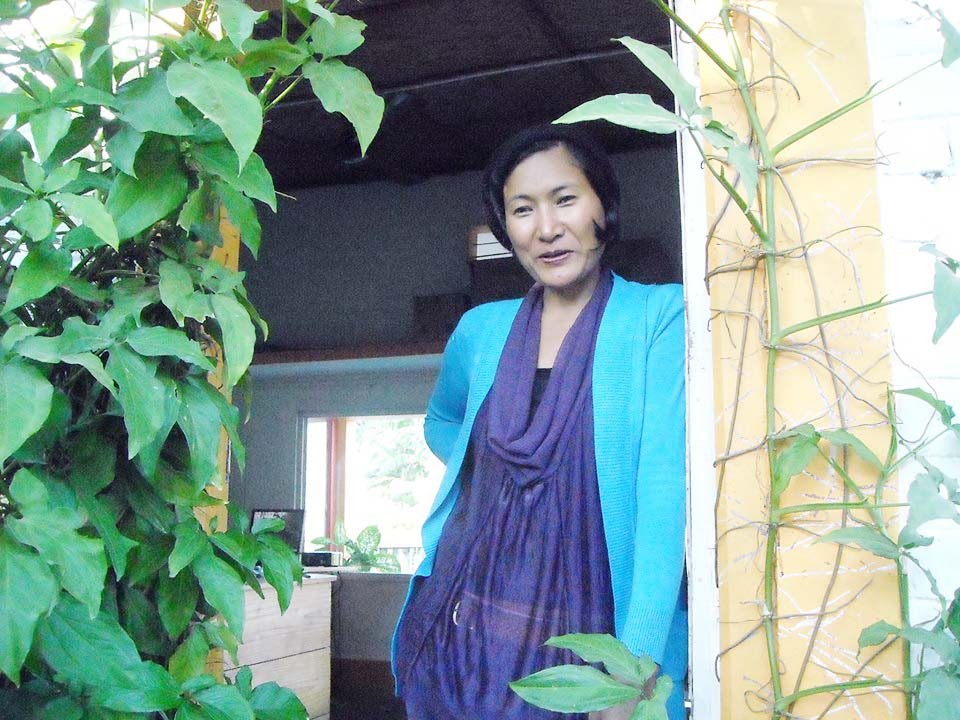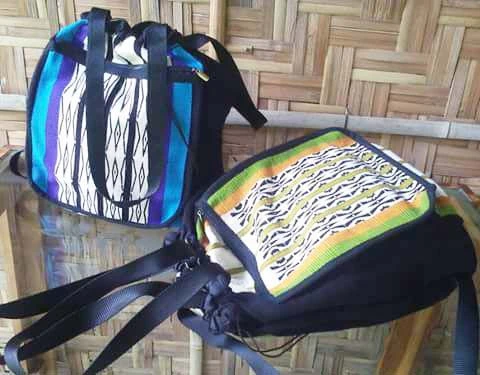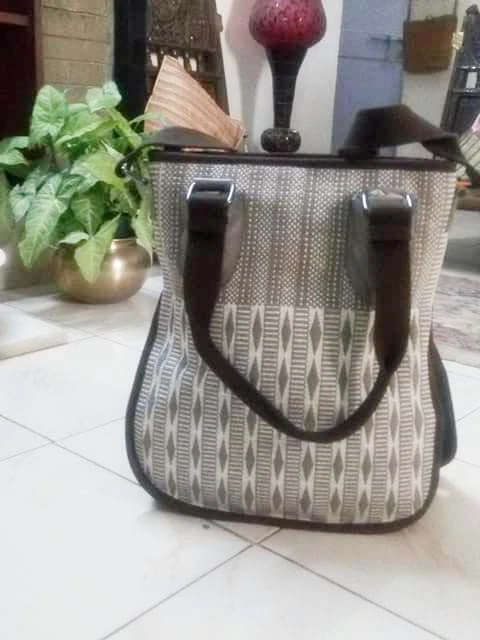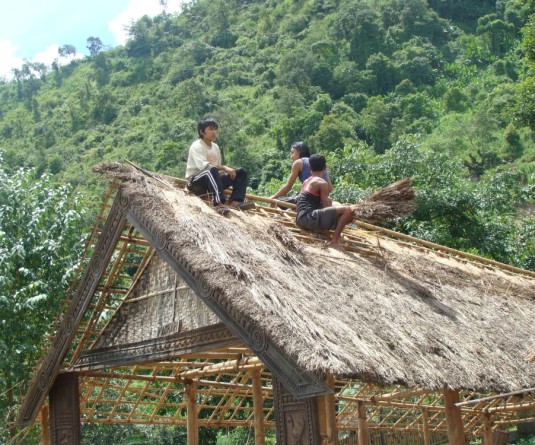Sonnie Kath, founding member of Exotic Echo Society (EES) at the EES office.

Shührazhüo A Mao
Dimapur | February 5
The word ‘Echo’ means the reflection of a sound. When Sonnie Kath, alongside some others, established the ‘Exotic Echo Society’ (EES) in 2008, first as a self help group, she imagined the Society to echo the losing cultural dynamics of the Nagas to society at large.
“We want to let people hear our voice,” says Kath, founder member and entrepreneur at EES.
The Society began with bringing together exploited women weavers to gain experience of fair labour practices. “Women are tied down with responsibilities for which they have to stay at home most of the time. Exotic Echo wanted to make home based work productive for rural women,” explains Kath.
Loinloom products of EES ready for display.[/caption] With the help of a few others, particularly Indranil Biswas and family, Exotic Echo today has 200 members, consisting mostly of home workers and school drop outs, all women. There are around 90 full time weavers who earn Rs. 3000-4000 per month.

Livelihood through Tradition
It is not easy for the EES to support such an enterprise. The EES is able to sustain the livelihoods of these weavers because of how they operate, without huge infrastructure. Raw materials like cotton are cultivated in Phek district. “Cotton cultivation is not labour intensive and gives high income as the market price is Rs 240/- per kg,” informs Kath. However, a number of other difficulties play up as the sector remains disorganized. “Even the Nagaland government has no handloom directorate till date,” she laments.
In order to keep up, Indranil Biswas, another founding member of EES, came up with the idea of a Loinloom Festival with the theme ‘Livelihood through Tradition’. The Festival, held every winter, not only supports the livelihoods of those working at the EES, it also opens up local talent to tourists and other interested people from outside Nagaland State. “They really enjoy the weaving festival,” says Kath, who co-organizes the Festival.
Their products are comparatively more expensive than others because these are considered “artistic textiles.”

“The weaving is highly time consuming and woven with great strength by the women. This is practiced by only a few tribes in the world,” Sonnie Kath explains of the traditional Naga back strap weaving method, also known as a Loinloom. Making the yarn takes a lot of time and skill, after which it is dyed from February to April before the rains start in the region. Another important factor in making the loinloom textiles is that finishing is done with a natural dye and there are no added chemicals.
Promotion & marketing
The Exotic Echo Society promotes itself through exhibitions. The loinloom festivals are held every December in Diezephe village. The next exhibition they will participate in is at Craft Museum, New Delhi.
“The government hosts only typical tribal handicrafts to be displayed for a month. Lots of foreigners, especially Europeans, like our cotton products. In Kolkata, we share a network with Weavers’ Studio which also promotes traditional products. Then there is Mahalaxmi Saras exhibition, which is an initiative of the Ministry of Rural Development, Government of India,” lists Kath, the vibrant woman entrepreneur.
In Goa, their NGO partner organizes retreat programs (Samata Holistic retreat center) which focus on promoting everything natural and organic, especially food products. Products get huge national and international exposure on this platform. There is an upcoming exhibition in Laos, and a major exhibition in Japan in 2019, organized by Biodye.
Local weavers will be taken to these for live demonstration of their work that goes into producing the loinloom textiles—to “showcase the amount of hard work, skill and dedication it takes and also the amount of time given for this long process,” maintains Kath.

Tribal pride
Loinloom weaving is about tribal pride. Entrepreneur Sonnie Kath acknowledges that “Our own people don’t respect the history and culture behind the textiles we wear.” She points out how during the days of Naga foreparents, headhunters had different shawls as did feast givers to demarcate their positions in the village and society. Common folk wore other common shawls.
According to her, foreigners and tourists who buy this stuff have better understanding and appreciation of the significance, work and time given to develop these textiles and other tribal influenced products.
However, problems persist with many others copying tribal art without permission or acknowledgement of the tribes. Kath quotes GK Rao, an intellectual on the matter, who said that the government can give “constituent rights to tribeswomen.” This means that whenever anyone wants to replicate a particular design from a particular tribe in their art/craft works, they would have to first seek permission from the tribeswoman who is the keeper of these patterns.
For Kath, Article 371-A should be used to protect and further rights such as these to preserve “tribal pride.”
The writer is currently an intern at The Morung Express






